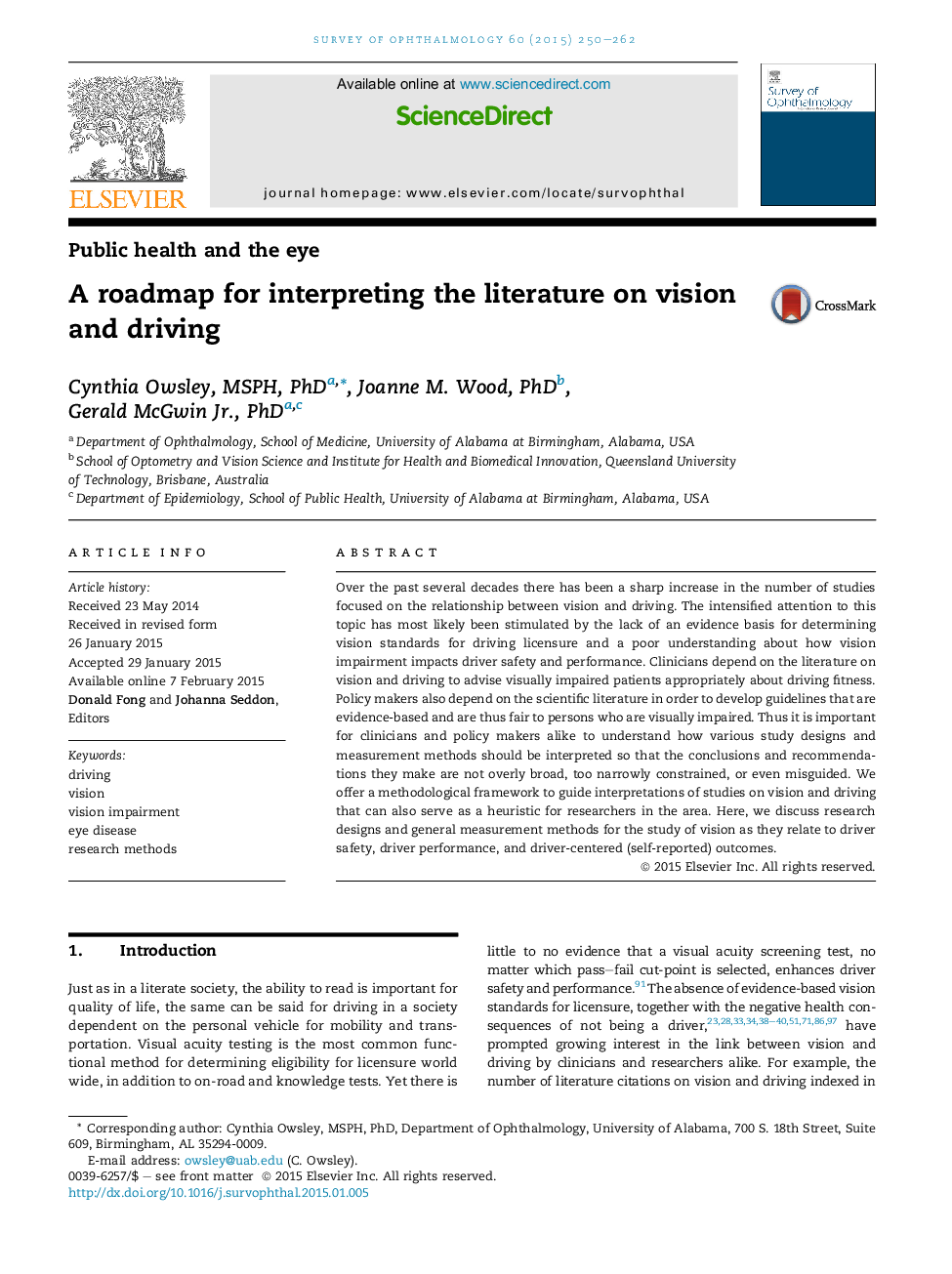| Article ID | Journal | Published Year | Pages | File Type |
|---|---|---|---|---|
| 4032498 | Survey of Ophthalmology | 2015 | 13 Pages |
Over the past several decades there has been a sharp increase in the number of studies focused on the relationship between vision and driving. The intensified attention to this topic has most likely been stimulated by the lack of an evidence basis for determining vision standards for driving licensure and a poor understanding about how vision impairment impacts driver safety and performance. Clinicians depend on the literature on vision and driving to advise visually impaired patients appropriately about driving fitness. Policy makers also depend on the scientific literature in order to develop guidelines that are evidence-based and are thus fair to persons who are visually impaired. Thus it is important for clinicians and policy makers alike to understand how various study designs and measurement methods should be interpreted so that the conclusions and recommendations they make are not overly broad, too narrowly constrained, or even misguided. We offer a methodological framework to guide interpretations of studies on vision and driving that can also serve as a heuristic for researchers in the area. Here, we discuss research designs and general measurement methods for the study of vision as they relate to driver safety, driver performance, and driver-centered (self-reported) outcomes.
